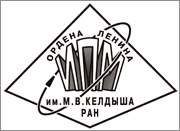|
This article is cited in 1 scientific paper (total in 1 paper)
Computer modeling and numerical studies of peptide nanotubes based on diphenylalanine
V. S. Bystrov, S. V. Filippov
Abstract:
The work is devoted to computer studies of the structural and physical properties of such self-organizing structures as peptide nanotubes based on diphenylanine dipeptide with different initial isomers of the left and right chiralities of these dipeptides. The structures under study are considered both with empty anhydrous and with internal cavities filled with water molecules. Molecular models of both ring and helix structures are investigated, which are consistent with the known experimental data. To study the effect of nano-sized clusters of water molecules embedded in the inner hydrophilic cavity on the properties of nanotubes (including the changes in their dipole moments and polarizations), as well as the changes in the structure and properties of water clusters themselves (their dipole moments and polarizations), the surfaces of internal cavities of nanotubes and outer surfaces of water cluster structures for both types of chirality are analyzed. Including using a specially developed method of visual differential analysis of structural features of (bio)macromolecular structures.
The obtained results of calculations of a number of physical properties (polarization values, etc.) are given for various cases and analyzed in comparison with the known data. These data are necessary for analyzing the interactions of water molecules with hydrophilic parts of nanotube molecules based on diphenylalanine, such as COO$^-$ and NH$_3^+$, since they determine many properties of the structures under study.
A number of the obtained data are planned to be used for further analysis of the possible adhesion and capture of certain medical molecular agents (components) by active layers of diphenylalanine-based nanotubes, which can be useful for creating capsules for targeted delivery of pharmaceuticals and drugs on their basis.
Keywords:
diphenylalanine, peptide nanotubes, self-organization and self-assembly,
clusters of water molecules, molecular modeling, density functional theory, quantum
semi-empirical methods, visual-difference method of structure analysis, dipole moments, polarization, chirality.
Citation:
V. S. Bystrov, S. V. Filippov, “Computer modeling and numerical studies of peptide nanotubes based on diphenylalanine”, Keldysh Institute preprints, 2021, 078, 54 pp.
Linking options:
https://www.mathnet.ru/eng/ipmp2995 https://www.mathnet.ru/eng/ipmp/y2021/p78
|

|




 Contact us:
Contact us: Terms of Use
Terms of Use
 Registration to the website
Registration to the website Logotypes
Logotypes








 Citation in format
Citation in format 
